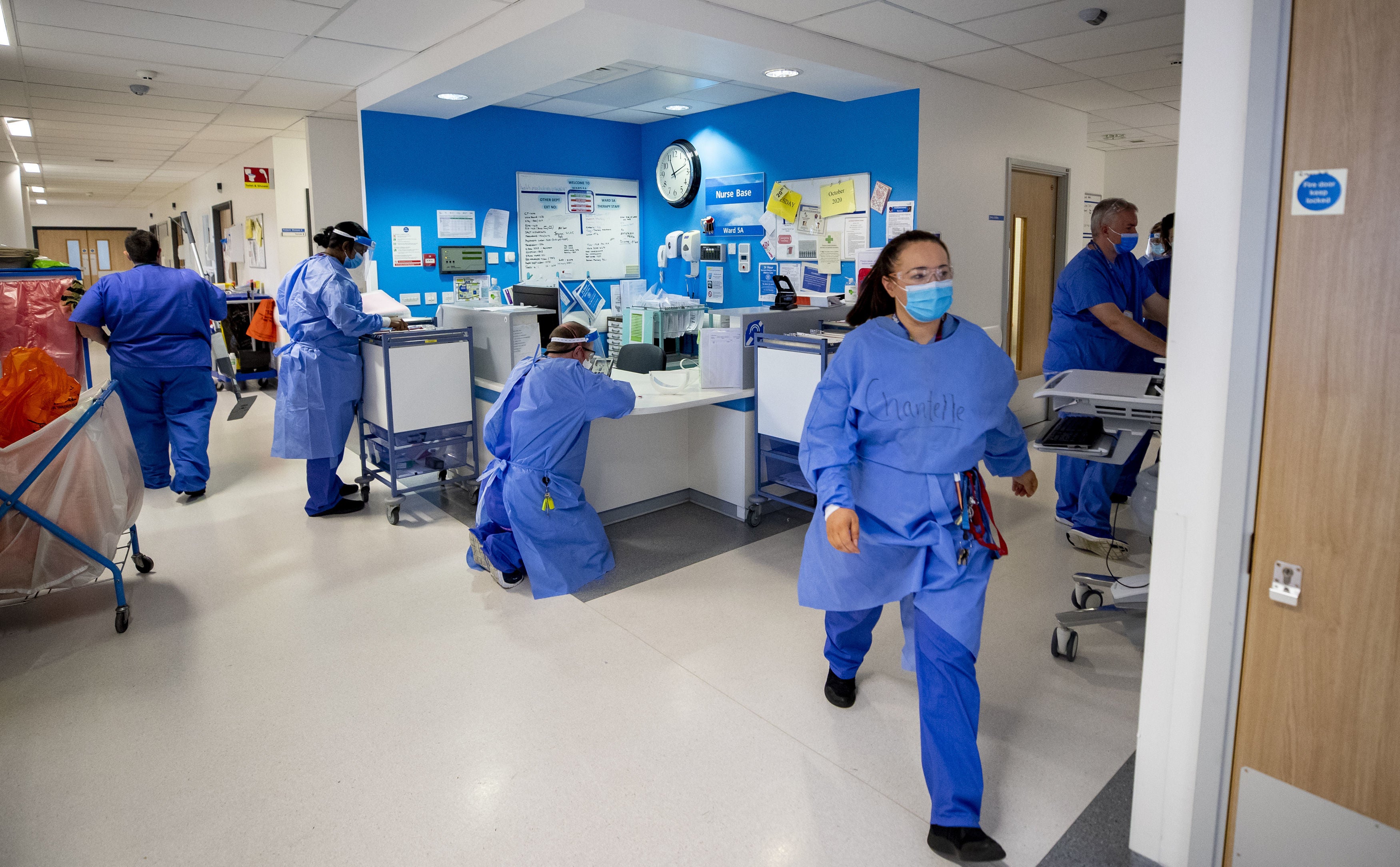NHS scheme to reduce hospital pressures ‘stalled’ over lack of beds and staff
Exclusive: ‘Vital’ service aimed at reducing hospital admissions is being used as ‘overflow’ for under-pressure A&Es

Your support helps us to tell the story
From reproductive rights to climate change to Big Tech, The Independent is on the ground when the story is developing. Whether it's investigating the financials of Elon Musk's pro-Trump PAC or producing our latest documentary, 'The A Word', which shines a light on the American women fighting for reproductive rights, we know how important it is to parse out the facts from the messaging.
At such a critical moment in US history, we need reporters on the ground. Your donation allows us to keep sending journalists to speak to both sides of the story.
The Independent is trusted by Americans across the entire political spectrum. And unlike many other quality news outlets, we choose not to lock Americans out of our reporting and analysis with paywalls. We believe quality journalism should be available to everyone, paid for by those who can afford it.
Your support makes all the difference.A flagship NHS scheme to reduce pressure on hospitals has “stalled” due to a lack of beds and staff shortages, The Independent can reveal.
Hospital wards designed to treat NHS patients within one day are instead being “inappropriately” used as “overflow” areas for busy A&Es, according to research by the Society for Acute Medicine (SAM).
These wards, called “same day emergency care units”, were rolled out to all NHS trusts before the pandemic, to help reduce hospital admissions. In 2019, NHS England promised the scheme, once implemented in all trusts, would reduce admissions in English hospitals by 50,000 a year.
However, a study carried out in June, which looked at some of these units, showed just 22 per cent of the patients who attended hospital were assessed and treated within one day, when the national target is for these units to see at least 30 per cent.
The Society for Acute Medicine said the units could “play a vital role” in preventing thousands of unnecessary overnight stays but progress is “stalling”. This is due to “significant inconsistencies” in how the 24-hour wards were being used by hospitals and a lack of funding for them.
Patient conditions such as blood clots, skin infections or fevers in cancer patients could be treated in these wards, preventing them from having to spend a night in hospital.
Despite NHS England making the scheme a priority in 2019, little progress has been made and SAM claims funding made available for urgent care over the past two years has not been directed to this cause.
Speaking with The Independent, Dr Nick Scriven, representing SAM, said the wards are used as overflow for A&E “when bed pressures and staff shortages get too tight”.
He explained some units are “used as normal wards or the staff are taken to fill gaps elsewhere. As hospitals run out of beds, they look at somewhere else to put patients and unfortunately the units get hit.”
The number of hospital beds in England has been decreasing for decades and by 2019-20, levels were almost half of what they were in 1987, despite the population rising from 57 million to 67 million.
NHS leaders warned this week that healthcare services were “at breaking point” as official figures revealed A&E waiting times had hit an all-time-high, with more patients than ever waiting over 12 hours in emergency departments.
Ambulance response times for October had also skyrocketed with record delays, which are often driven by ambulances being forced to wait outside A&E.
A major cause of long waits for emergency care is the lack of beds for patients waiting to be admitted to hospital. According to an analysis by the King’s Fund think thank, the number of hospital beds in England dropped from 153,725 in 2010-11 to 131,795 in 2019-20.
Dr Tim Cooksley, from the Society for Acute Medicine, said: “The number of NHS hospital beds has reduced by 11 per cent over the past decade and bed occupancy was around 90 per cent long before the pandemic – both reasons this option to alleviate pressures on hospitals and improve patients’ experiences and access to care is so vital.”
He said if all the units in the audit had achieved NHS England’s 30 per cent target it would have prevented 350 admissions in one day.
“Over January and February in mid-winter this would equate to more than 20,000 overnight stays being avoided, so we need to ensure these units are being used appropriately and have the resources needed to make this happen,” he added.
NHS England was approached for comment.



Join our commenting forum
Join thought-provoking conversations, follow other Independent readers and see their replies
Comments